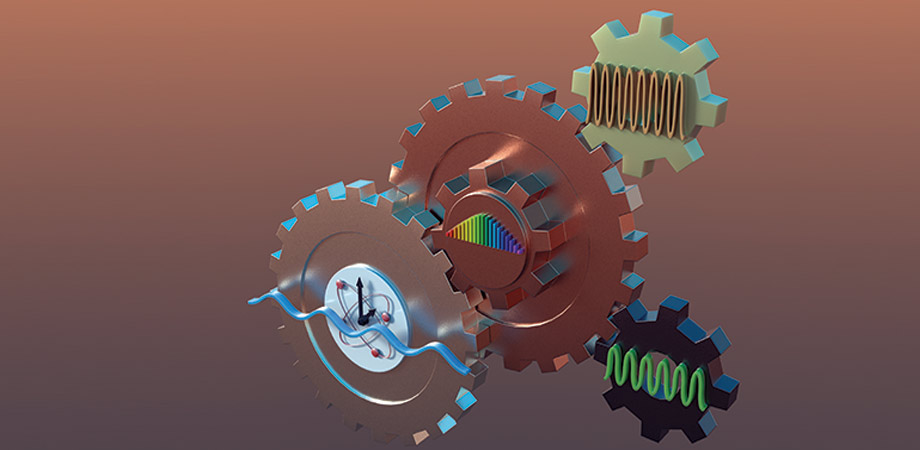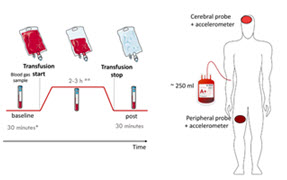Cosmic connections: Telecoms technology meets astrophotonics

Astronomers have always been keen adopters and developers of new technology, aching to resolve that fuzzy looking cosmic object a little better or see just that bit further into the universe. As a result, astronomy is widely regarded as a hub of innovation that people from a host of industries always keep an eye on. Where new technologies are born and then spread across the world to benefit society. And equally, where technologies from disparate areas are vacuumed up, reshaped, and improved in the pursuit of scientific discovery.
No area has had a greater influence on astronomy in recent decades than telecommunications, where huge investment and rapid progress are driven by the ever-more-central role that the connected digital world plays in society.
Yet both telecommunications and astronomy face looming technological hurdles. For instance, the single-mode optical fiber—for so long the workhorse of our telecommunications networks—is fit to burst, rapidly approaching the physical limits of its data capacity. New approaches are needed to beat the looming capacity crunch and ensure society’s voracious appetite for more data remains sated.
Meanwhile, in astronomy, the challenge is different. Astronomers are trying to make their tools smaller and more powerful to look deeper into the universe and open new ways to observe the heavens. Though these technological challenges are worlds apart, researchers from both sectors are searching for solutions in the same place: photonics.
Several new devices and applications derived from telecoms photonics innovations are beginning to highlight the potential of photonics in astronomy—a subdiscipline known as astrophotonics—to deliver miniaturization and new observing capabilities and insights into the cosmos.
For example, originally from telecommunications but now making waves in astrophotonics is the arrayed waveguide grating (AWG). In an AWG, light of multiple different wavelengths from a fiber is allowed to spread freely before being captured by one of a large number of curved channel waveguides of different lengths that form the shape of an array. The light travels through these waveguides before being let loose again where constructive interference causes each output channel to receive only light of a certain wavelength.

An arrayed waveguide grating. Photo credit: Schorsch, CC BY-SA 3.0
AWGs are a key component of fiber-optic communication networks, used to boost the capacity of the fiber by combining channels of several wavelengths onto a single optical fiber at the transmission end, and separating individual channels of different wavelengths at the receiving end.
More than a decade ago, astronomers realized that, in principle, AWGs can also be used in astronomy for spectroscopic purposes. Spectroscopy is a central tool in astronomy, essentially spreading the light from a cosmic object into a spectrum, like a rainbow. By studying the spectra of different cosmic objects—from planets and stars to interstellar gas and galaxies—astronomers can identify which elements are present, and deduce temperature, density, motion, and many other properties.
Conventional spectrographs rely on a complex arrangement of optical components to spread light from an astronomical source into its constituent wavelengths. An AWG’s array of waveguides can perform a similar role in a much simpler way. What’s more, AWG spectrographs can be built on-chip, delivering numerous advantages over traditional spectrographs, including flexibility, stability, cost-effectiveness, and crucially compactness; conventional spectrographs can be up to 6-m long.
But in practical terms, transforming AWGs from telecoms stalwart to astronomical innovations is not so easy. “We use this term in astronomy called resolving power,” explains Nem Jovanovic, a physicist at the California Institute of Technology who is developing astrophotonics technologies. “If you take the wavelength of light and divide it by the channel spacing in an AWG, that’s your resolving power.”
Telecoms-grade devices typically have a resolving power of about 7,000. But this is not enough for typical high-resolution spectroscopic applications in astronomy. Tasks like separating and resolving the light from two cosmic objects that are close together, such as binary stars or an exoplanet and its host star, demand resolving powers of more than 10,000, sometimes up to 1 million. Alongside resolving power, AWG spectrographs also need a wide spectral range and decent throughput (efficiency).
“We started working with AWGs in 2010, and at the beginning, we just had a few telecoms devices that we characterized, and then we tried to do some spectroscopy with them on-telescope, to introduce them to the community,” recalls Jovanovic. “Fast forward five years and I got asked questions like: How high in resolution can you go? How broad a bandwidth can you reach? What efficiency can you get? And the answer to those questions was, I don’t know.”
This is why for the past three years Jovanovic and his team have been working hard to make AWGs that are up to the task. “We have devices in the lab downstairs that are closer to 40,000 resolving power, but less efficient,” he says. “And we have devices that are very broad spectral range, 80 percent efficiency from input to output, which is at the point where they’re competitive with the telecoms-grade ones, just at lower resolution.”

Atmospheric spectroscopy applications. Photo credit: Keck Institute for Space Studies / Chuck Carter
Though further developments are required before AWGs are widely adopted in the community, Jovanovic’s promising results suggest AWG spectrographs could soon play a key role in analyzing a host of cosmic phenomena, from the chemistry of a comet to the constituents of a potentially habitable world’s atmosphere.
The application of telecoms-AWGs and similar photonic devices in astronomy was only made possible by the invention of the photonic lantern. This device was originally conceived in the mid-2000s to take the light signal captured by a telescope’s multimode fiber (which efficiently collects light from a telescope’s focal plane) and channel it into an array of output single-mode waveguides. The light could then be further manipulated by AWGs, fiber couplers, beam shapers, switches, or any other devices that work best with single-mode light.
Jovanovic and his collaborators are now developing the photonic lantern beyond this first application, as a useful astrophotonics tool in its own right. For instance, to correct for a turbulent atmosphere that messes up incoming starlight for ground-based telescopes, he and a team of researchers are using photonic lanterns as focal-plane wavefront sensors.
Wavefront sensors are a crucial part of adaptive optics systems, where deformable mirrors rapidly apply small corrections to the wavefront hitting the telescope in real time, cancelling out atmospheric effects. Photonic lanterns have the potential to offer superior sensing performance to current systems, making adaptive optics more accurate and ultimately allowing the resolution of much fainter astronomical objects.
In other work, he and graduate student Yinzi Xin are exploring how photonic lanterns might help in the quest to discover new, habitable worlds. A key problem in exoplanet discovery is glare from a host star obscuring the light from an exoplanet, preventing it from being identified and characterized.
Complex and advanced coronagraphs solve this problem today, using multiple masks and deformable mirrors to essentially blot out the star. So far, this has allowed astronomers to directly image and analyze young and hot Jupiter-like gas giants. But to resolve an Earth-like planet around a Sun-like star (the most likely scenario to support life as we know it) will call for something even more sophisticated.
Jovanovic and Xin discovered that by pointing their photonic lantern device dead-on with a star, it’s various ports can sift and reject starlight, while letting light from a planet pass through, in theory allowing a detailed look at potentially habitable worlds. “My graduate student has tested the concept down in the lab and sure enough, the lantern is showing that on-axis light is not allowed to travel through the device and light off-axis is,” he says. “We’re now trying to understand how to correct for imperfections currently limiting performance.”
In a rare case of a technology originally from astronomy crossing over to the telecommunications domain, other researchers have started to explore the utility of photonic lanterns in fiber optic communications networks. “Before, everything was single mode, but now one of the ways that they are looking to increase data capacity is by running higher-order modes,” explains Jovanovic. “An approach that’s been tested by Bell Labs and others is to try to see if photonic lanterns could be a solution to space-division multiplexing in future ultra-high-capacity optical transmission systems.” Using photonic lanterns in this way could substantially increase transmission capacities, helping network operators avoid the dreaded capacity crunch.

The fabrication of a photonic lantern. Photo credit: CREOL
Another technology relevant to both the capacity crunch in telecommunications and the type of high-resolution spectroscopy needed to characterize exoplanets in astronomy is the frequency comb—a laser that produces extremely short pulses of light at regularly spaced frequency intervals.
Since its invention around 2000 to accurately count the cycles from optical atomic clocks, the frequency comb has since found use in labs around the world for improving time and frequency standards, conducting atomic and molecular spectroscopy, and more.
In telecommunications, frequency combs have been vigorously explored as potentially ideal solutions in communication networks, where the multitude of spectral lines they produce can serve as carriers for massively parallel data transmission.
In astronomy, their primary application is to precisely calibrate spectrometers. Calibration may not sound glamorous, but for tasks requiring extreme precision, such as exoplanet characterization, it is absolutely key. Sam Halverson, of NASA’s Jet Propulsion Laboratory, is developing new optical and photonic instrumentation to detect exoplanets. He underlines the importance of calibration in his work: “In this game, we live and die by our ability to calibrate.”
Unfortunately, most observatories cannot employ frequency combs. Not only are they highly complex devices—more complicated than the spectrometers they are calibrating—but they are prohibitively expensive ($1 million plus) for all but the largest and most deep-pocketed facilities.
Halverson is keen to rectify this situation and has been researching methods to simplify and democratize frequency combs. His first thought was to transfer frequency comb developments from the telecommunications industry to astronomy. Unfortunately, telecoms innovations are not directly applicable to spectrometer calibration, at least for the spectrometers Halverson uses to characterize exoplanets.
“The stars that we look at, especially bright Sun-like stars, have most of their photons emitting in the optical,” Halverson explains. “But telecommunications industry developments by far favor the near-infrared, and converting these advanced technologies into the optical is a large engineering and physics challenge.”
That’s why Halverson is exploring alternatives. The most promising so far is a technology first invented in the late 19th Century, the Fabry–Pérot interferometer, also known as an etalon. Though developed for astronomy, etalons today are more often found in other industries, including telecommunications, where they are used to control and measure wavelengths of light.
In essence, they act like an echo chamber for light. Light waves enter the device and bounce many times between two parallel mirrors. The small and precise gap between the mirrors dictates the wavelengths of light that are amplified during this process through constructive interference, so that the outgoing beam contains a range of wavelengths in resonance with the device.
The result is a spectrum that looks an awful lot like a laser comb except for one important difference. “Frequency combs are really this unbeatable ruler for light—there is no better frequency standard, quite literally,” explains Halverson. “An etalon gives you this rich forest of lines, but it’s not giving you the absolute answer of what are the fundamental frequencies that you’re seeing.”
To make etalons more competitive with frequency combs, Halverson and collaborators are taking a multipronged approach, for example, shielding the etalon as much as possible within a vacuum chamber, employing thermal control, and developing cavities made from ultra-stable materials such as Zerodur. It is hoped that, in the coming decade, developments such as these will see extremely stable, compact, cheap, broadband etalons calibrating a host of ground- and space-based telescopes.
This forecast applies more generally. As devices—whose development largely piggybacks off decades-worth of telecommunications industry research and investment—are developed and proven in the field, researchers expect more bulk optical systems will be replaced by on-chip astrophotonics components.
These ultra-stable, highly sensitive, easily replicable, and cost- effective miniaturized technologies will be at the heart of next-generation spectroscopic and interferometric instruments. From explaining how galaxies form and exposing the nature of dark energy, to answering whether there exists an Earth 2.0 on which life is flourishing, these technologies will perhaps be the key that unlocks answers to the most intransigent questions we have about the Universe.
Benjamin Skuse is a science and technology writer with a passion for physics and mathematics whose work has appeared in major popular science outlets.



